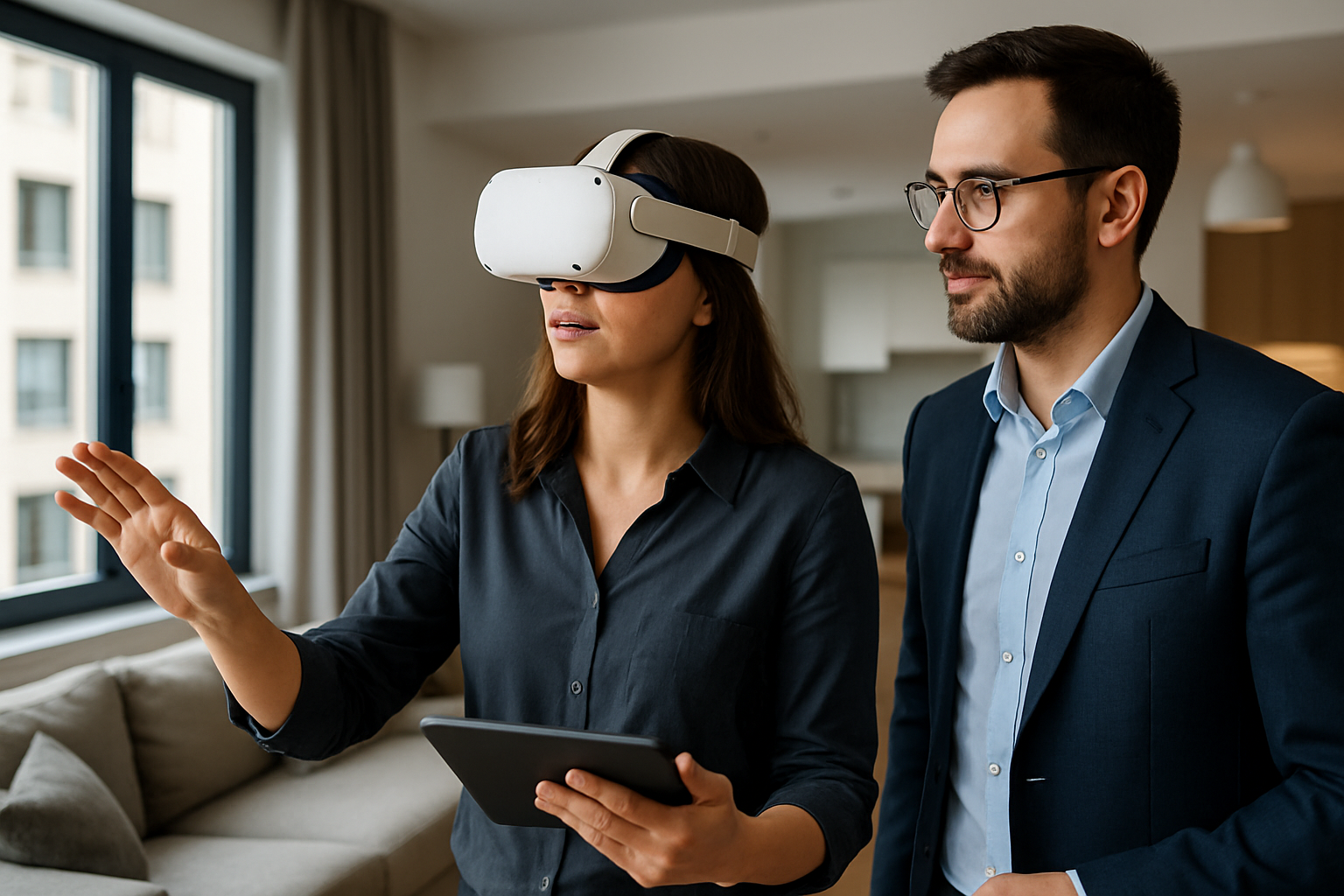Title: Virtual Reality's Disruptive Impact on Property Showcasing
In the ever-evolving landscape of real estate, a groundbreaking technology is reshaping how properties are presented and experienced. Virtual Reality (VR) has emerged as a game-changing tool for showcasing homes, apartments, and commercial spaces. This innovative approach is not just a fleeting trend but a transformative force that's redefining the property viewing process, offering unprecedented convenience and immersion for potential buyers and renters alike.

Enhanced Visualization and Decision-Making
One of the most significant advantages of VR in real estate is its ability to provide a comprehensive view of a property. Traditional photos and videos, while useful, often fail to convey the true sense of space and flow within a home or office. VR tours, on the other hand, offer an immersive experience that closely mimics an in-person visit. This enhanced visualization allows potential buyers or renters to make more informed decisions, often leading to increased confidence in their property choices.
Expanding the Buyer Pool
VR technology has effectively removed geographical barriers in property hunting. Investors and homebuyers from across the country or even internationally can now explore properties in detail without the need for travel. This expanded reach has opened up new markets for sellers and developers, potentially increasing competition and driving property values in areas that might have previously been overlooked due to their remote locations.
Cost and Time Efficiency
For real estate agents and property managers, VR tours represent a significant opportunity for increased efficiency. By offering virtual walkthroughs, agents can drastically reduce the number of in-person showings, saving time and resources. This is particularly beneficial for high-end properties or those in remote locations, where arranging viewings can be logistically challenging and expensive.
The Integration of Augmented Reality
While Virtual Reality offers immersive property tours, its cousin, Augmented Reality (AR), is also making waves in the real estate sector. AR technology allows potential buyers to visualize changes to a property, such as different furniture layouts or color schemes, in real-time. This feature is particularly useful for new developments or properties requiring renovation, as it helps buyers envision the potential of a space beyond its current state.
Challenges and Future Developments
Despite its many advantages, the adoption of VR in real estate faces some hurdles. The cost of creating high-quality VR content can be significant, potentially limiting its use to higher-end properties or larger real estate firms. Additionally, there’s still a learning curve for both agents and clients in using VR technology effectively.
However, as the technology becomes more accessible and affordable, these challenges are likely to diminish. Future developments in VR for real estate might include more interactive features, such as the ability to measure spaces or test different design options in real-time during a virtual tour.
Impact on Property Marketing Strategies
The rise of VR in real estate is fundamentally changing property marketing strategies. Real estate firms are now investing in creating compelling virtual experiences as a core part of their listing presentations. This shift is not just about showcasing properties; it’s about creating engaging, memorable experiences that stand out in a crowded market.
Environmental and Sustainability Benefits
An often-overlooked aspect of VR property tours is their positive environmental impact. By reducing the need for physical visits, especially for out-of-town buyers, VR technology contributes to lower carbon emissions associated with travel. This aligns well with growing consumer preferences for environmentally conscious practices in all industries, including real estate.
The Role of VR in Commercial Real Estate
While much of the focus has been on residential properties, VR is also making significant inroads in commercial real estate. For large office spaces, industrial facilities, or retail locations, virtual tours provide an efficient way for businesses to scout potential locations without the need for extensive travel or disruption to current operations.
Preparing for a VR-Driven Real Estate Future
As VR technology continues to evolve and become more prevalent in real estate, industry professionals need to adapt. This means not only investing in the technology but also developing the skills to create compelling virtual experiences. Real estate education programs are beginning to incorporate VR training, preparing the next generation of agents for a digitally-enhanced property market.
In conclusion, Virtual Reality is not just enhancing the real estate industry; it’s fundamentally changing how properties are showcased, marketed, and sold. As the technology becomes more sophisticated and widespread, we can expect to see even more innovative applications that will continue to shape the future of property transactions. For buyers, sellers, and real estate professionals alike, embracing this virtual revolution is becoming less of an option and more of a necessity in staying competitive in the dynamic world of real estate.





